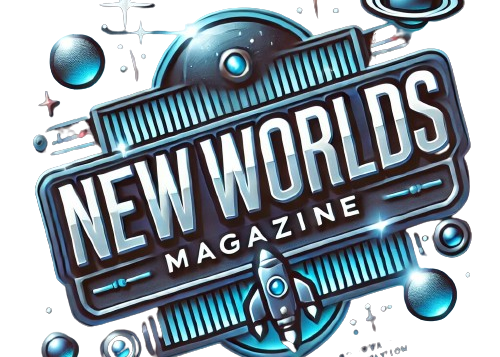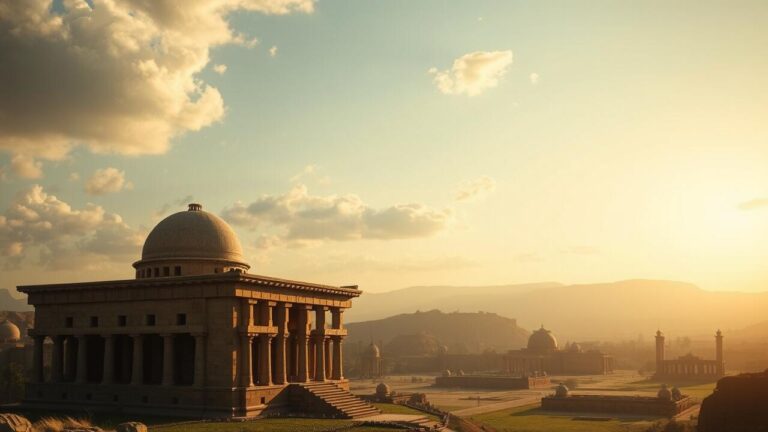Virtual Reality for Training and Planning
The leaps in virtual reality (VR) are transforming the landscape of training and planning amid exploratory endeavors, offering tools that are nothing short of revolutionary. Imagine being plunged into meticulously crafted simulated environments where trainees can grapple with scenarios so lifelike they blur the lines between the virtual and the real. This immersive experience fosters a deeper comprehension of intricate systems, allowing explorers to hone their decision-making prowess without stepping foot into the perilous realms of actual fieldwork.
But it doesn’t stop there! VR’s impact extends to mission planning like a ripple through water. With detailed simulations at their fingertips, researchers can devise strategies that dance around myriad potential outcomes shaped by shifting variables. Stakeholders find themselves not just participants but visual architects—able to piece together every facet from inception to execution, enhancing collaboration and sharpening communication among team members. By harnessing this cutting-edge technology, exploration projects evolve into finely tuned operations executed with precision that elevates both efficiency and effectiveness in reaching ambitious objectives.
Simulating Environments for Better Preparation
Virtual reality (VR) technology stands at the forefront of a transformative era in training for exploration missions, crafting vivid simulations that plunge individuals into a variety of environments. Imagine this: trainees can dive headfirst into lifelike scenarios—all without the perilous consequences tied to real-world fieldwork. They get to navigate rugged landscapes, face unpredictable weather patterns, and even grapple with potential emergencies that might spring up during their adventures. This kind of preparation doesn’t just sharpen skills; it’s a confidence booster too! Explorers emerge ready to tackle genuine challenges with greater ease.
But wait—there’s more! The capacity to recreate diverse geological and environmental settings proves invaluable when plotting out missions. Teams harness VR models to scrutinize each location’s unique characteristics before they ever set foot on-site. This deep-dive analysis empowers strategic choices about resource distribution, gear selection, and safety protocols—a meticulous groundwork that enhances both efficiency and effectiveness during actual explorations. Ultimately, such thorough prep work translates into heightened chances for mission success—what an exciting time we live in!
Wearable Technology in Field Operations
The realm of exploration has undergone a seismic shift, thanks to the meteoric rise of wearable technology. Imagine this: GPS-enabled smartwatches and health-monitoring sensors now serve as lifelines for explorers, offering real-time data that pulses with urgency. This isn’t just about staying connected; it’s about elevating communication and situational awareness to dizzying new heights. Teams can pivot, adapt, and tackle unforeseen challenges in remote locales with astonishing agility.
But wait—there’s more! These remarkable wearables don’t merely track steps or heart rates; they meticulously monitor vital signs and physical activity levels, ensuring workers are not just surviving but thriving amidst grueling demands. The daily grind becomes a dance between efficiency and safety.
Picture this seamless integration into everyday operations: alerts for dangerous conditions beam directly to an explorer’s wrist like a guardian angel whispering warnings in the wilderness. It’s all about minimizing risks and accidents that could derail even the most seasoned adventurer. Furthermore, these cutting-edge devices play a pivotal role in data collection during explorations—streamlining processes while sharpening decision-making skills like never before.
In essence, we’re witnessing an exhilarating fusion of technologies that arm explorers with everything they need to conquer whatever challenges lie ahead in the wild expanse of their fieldwork.
Monitoring Health and Safety of Explorers
The rise of wearable technology has sparked a revolution in the realm of exploration, ushering in an era where real-time health tracking becomes vital for adventurers navigating remote terrains. Imagine devices brimming with sensors—these little marvels can monitor essential signs like heart rate and body temperature with astonishing precision. This relentless vigilance empowers team leaders to swiftly evaluate each explorer’s health status, catching potential problems before they spiral out of control.
But wait, there’s more! These cutting-edge gadgets don’t just keep tabs on physical well-being; they also supercharge safety protocols by pinpointing environmental threats. Picture explorers being alerted to sweltering heat waves or toxic air quality—all thanks to these smart wearables. Such foresight nurtures a safer working atmosphere amidst nature’s unpredictability. Embracing these technological advancements not only amps up operational efficiency but also fortifies the welfare of personnel brave enough to tackle demanding and capricious environments.
| Device Name | Key Features | Health Metrics Monitored | Environmental Alerts |
|---|---|---|---|
| Garmin Fenix 6 | GPS, Heart Rate Monitor, Smart Notifications | Heart Rate, Body Temperature, Stress Levels | Heat Index, Altitude, Weather Conditions |
| Fitbit Charge 5 | Built-in GPS, Daily Readiness Score | Heart Rate, Sleep Patterns, SpO2 Levels | Air Quality Alerts, Temperature Monitoring |
| Apple Watch Series 7 | Comprehensive Fitness App, ECG Monitoring | Heart Rate, Blood Oxygen Levels, Activity Tracking | Environmental Noise Levels, UV Index |
| Whoop Strap 3.0 | 24/7 Monitoring, Strain Coach | Heart Rate Variability, Recovery Metrics | Weather Alerts, Heat Stress Indicators |
Blockchain for Data Integrity
The advent of blockchain technology in the realm of exploration has sparked a seismic shift in how data integrity is preserved. Imagine, if you will, decentralized ledgers that act as unyielding guardians of truth—once an entry finds its place within this digital tapestry, it stands forever unchanged unless the collective nods in agreement. This immutable nature drastically curtails the potential for data manipulation—a vital safeguard when every detail matters immensely in exploration endeavors.
But wait, there’s more! Blockchain doesn’t just enhance security; it opens up new avenues for collaboration among the myriad players engaged in exploration pursuits. Picture a landscape where information flows freely yet securely, with ownership rights firmly intact. Enter smart contracts: those clever automated protocols that orchestrate agreements and transactions without a hitch. The outcome? A remarkably secure and streamlined approach to managing exploration data—one that cultivates trust and accountability among all contributors involved. It’s not just evolution; it’s revolution!
Securing Exploration Data with Decentralized Ledgers
The fusion of blockchain technology into the realm of exploration presents a formidable remedy for safeguarding sensitive information. Imagine, if you will, decentralized ledgers that empower organizations to maintain data in its pristine state while ensuring it’s instantly available to those who are authorized. Each transaction or nugget of information is etched into the ledger with such meticulous care that tampering becomes an impossibility—an intricate web woven to cultivate trust among all stakeholders engaged in exploration endeavors. This newfound transparency acts as a balm for disputes, fostering an environment ripe for collaboration across diverse teams and organizations.
But wait—there’s more! Enter smart contracts, those remarkable digital agreements nestled within the blockchain framework, capable of automating myriad processes tied to data management and sharing. These clever contracts spring into action based on predefined criteria without needing a meddlesome third party to oversee proceedings, thereby streamlining operations and slashing the potential for human error down to size. Given that exploration projects typically dance with numerous stakeholders, constructing a trustworthy system dedicated to upholding data integrity becomes not just beneficial but downright vital. With security features built right into blockchain’s DNA, unauthorized access faces formidable barriers while ensuring adherence to regulatory standards governing these complex exploration activities—a veritable fortress in the digital age!
Augmented Reality in Geological Surveys
The marriage of augmented reality (AR) with geological surveys has utterly revolutionized the way geologists visualize and dissect subsurface data. Imagine this: digital information seamlessly draping over the physical landscape, offering professionals a window into the intricate world of geological formations and structures in an instant. This cutting-edge technology doesn’t just improve interpretations of complex datasets; it empowers more astute decision-making during exploration ventures. Picture field teams donning AR headsets or wielding mobile devices, their comprehension of site characteristics soaring as efficiency spikes during data collection and assessment.
But wait, there’s more! AR doesn’t merely serve individual professionals—it weaves a tapestry of collaboration among team members by establishing a common visual reference point. Multiple users can gaze upon the same augmented models simultaneously, sparking discussions about observations and hypotheses that transcend the constraints imposed by traditional data presentation methods. This dynamic level of interaction not only ignites greater engagement but also deepens understanding within geological contexts that might otherwise remain obscured. In this arena, AR isn’t just streamlining workflows; it’s slashing down survey times and assessments significantly—an exhilarating leap forward in geoscience!
Enhancing Visualization of Subsurface Data
The advent of augmented reality (AR) has utterly transformed the landscape for geologists and researchers, turning the once-static visualization of subsurface data into an immersive experience. Imagine digital overlays materializing in our tangible world—this is where AR steps in, breathing life into intricate geological formations that were previously difficult to grasp. With this cutting-edge technology, explorers can interact with three-dimensional models that vividly depict a variety of subsurface traits, all while making decisions rooted in deeper insights during exploration endeavors.
Picture teams out in the field, armed with AR tools that elevate their data-gathering efforts to new heights. These innovations foster a vibrant interplay with information—a dynamic dance between discovery and interpretation—that enhances collaboration and boosts efficiency like never before.
But wait! The perks don’t stop there; integrating AR into geological surveys unlocks a treasure trove of advantages. Instantaneous feedback from AR applications catalyzes swift analysis and interpretation of findings—like having a crystal ball for your discoveries! Visualizing data as it streams in slices through time minimizes the yawning chasm between mere data collection and actionable insights ready for deployment. It’s no wonder enhanced visualization leads to richer comprehension of resource distributions, lurking hazards, and broader geological context—it’s all about crafting smarter exploration strategies that pack a punch!
Sustainable Practices in Technology Deployment
The advent of groundbreaking technologies in exploration is increasingly spotlighting the crucial theme of sustainability. Think about it: harnessing renewable energy sources to power equipment significantly slashes our dependence on fossil fuels—a monumental shift! But that’s not all; cutting-edge machinery designed with energy efficiency in mind aims to curtail resource consumption dramatically. And let’s not overlook efficient waste management systems, which play a pivotal role by drastically shrinking the environmental footprint left by exploration activities.
Enter drones—these marvels of modern engineering are revolutionizing mapping and surveying tasks while minimizing ground disturbance and ecological damage. These unmanned aerial vehicles zip through the skies, gathering high-resolution data without so much as ruffling the feathers of their surroundings. Plus, innovative practices like remote monitoring lessen the necessity for human presence in delicate ecosystems. By embracing eco-friendly materials for both construction and operations, we’re ushering in a more sustainable ethos within the exploration arena—an exciting frontier indeed!
Minimizing Environmental Impact During Exploration
The fusion of cutting-edge technology into the realm of exploration opens up a maze of possibilities for drastically curtailing environmental repercussions. Imagine, if you will, advanced planning tools that empower teams to scrutinize potential sites long before any physical disruption takes place—a kind of crystal ball for decision-making! This foresight paves the way for astute choices, like pinpointing the most efficient routes for transporting equipment while keeping operational footprints as small as possible. Picture simulation software acting as an oracle, revealing sensitive zones and guiding teams to enact protective measures that safeguard fragile ecosystems from harm.
But wait—there’s more! The deployment of eco-conscious technologies emerges as a linchpin in fostering sustainable exploration practices. Consider drones gliding through the air on aerial surveys, deftly sidestepping the need for imposing heavy machinery that can wreak havoc on landscapes and local habitats alike. And let’s not overlook renewable energy marvels—solar panels basking in sunlight or wind turbines spinning gracefully—that supply power to remote operations with minimal reliance on fossil fuels. These innovations do more than just shield our planet; they herald a steadfast commitment to responsible exploration methods that look towards a greener future!
- Invest in research and development for sustainable technologies to enhance exploration practices.
- Implement strict guidelines for site selection to avoid ecologically sensitive areas.
- Utilize remote sensing and mapping technology to assess environmental impact before exploration begins.
- Train exploration teams in environmentally friendly practices and emergency response for potential ecological incidents.
- Promote collaboration with conservation organizations to align exploration efforts with wildlife protection.
- Regularly monitor and evaluate the environmental impact of exploration activities to ensure compliance with sustainability goals.
- Use biodegradable materials and eco-friendly products during fieldwork to minimize waste and pollution.
Conclusion
The fusion of cutting-edge technologies into the realm of exploration heralds a profound transformation in our quest to unravel the mysteries of natural resources. Picture this: virtual reality and augmented reality aren’t just novelties; they have revolutionized training protocols and geological surveys, enabling us to dissect data with unparalleled precision while enhancing risk management strategies. Meanwhile, wearable devices are not mere gadgets—they’re lifelines for explorers, delivering real-time health insights and seamless communication channels that bolster safety.
And let’s not overlook blockchain technology! Its adoption is a game changer, ensuring that exploration data remains untarnished and traceable amidst an ever-evolving landscape—curbing any potential for manipulation.
But wait! As we harness these advancements, there’s an urgent call to emphasize sustainability—a clarion reminder that minimizing environmental footprints isn’t just desirable; it’s essential. With the industry on the rise, striking a harmonious balance between aggressive exploration endeavors and ecological stewardship becomes imperative. The innovations we’ve discussed don’t merely streamline operations; they lay down a path toward more efficient, secure, and conscientious practices in exploration—practices poised to reshape resource management for good while cherishing our planet’s fragile ecosystems.
FAQS
What role does virtual reality play in exploration training and planning?
Ah, virtual reality (VR) — a wondrous realm where trainees can dive into lifelike simulations of real-world environments! It’s like preparing for an epic adventure without ever stepping foot outside. This immersive technology sharpens their skills and equips them for field operations while neatly sidestepping the myriad risks that actual exploration entails.
How does wearable technology contribute to the safety of explorers?
Picture this: wearable technology acting as a guardian angel, tirelessly monitoring vital signs and environmental factors. It churns out real-time data, ensuring that explorers are not only pushing boundaries but also safeguarded during their daring escapades in uncharted territories.
Why is blockchain important for exploration data?
Enter blockchain — a digital fortress! This remarkable tech crafts a decentralized ledger that wraps exploration data in layers of security, preserving its integrity against tampering and thwarting unauthorized prying eyes. The sanctity of information remains intact!
How does augmented reality enhance geological surveys?
Imagine augmented reality (AR) as an artist’s brush painting vibrant digital overlays onto the canvas of physical landscapes! It breathes life into geological surveys by fusing essential digital information with the tangible world around us, ushering in clearer visualization and deeper comprehension of subsurface mysteries.
What measures are being taken to ensure sustainable practices in technology deployment during exploration?
Sustainability takes center stage here! Efforts abound to minimize environmental footprints through conscientious tech deployment—think meticulous planning intertwined with vigilant monitoring alongside eco-friendly materials and methods. A harmonious balance between innovation and nature is the goal!







